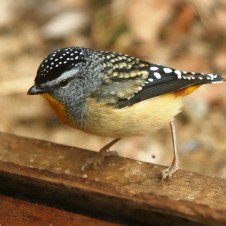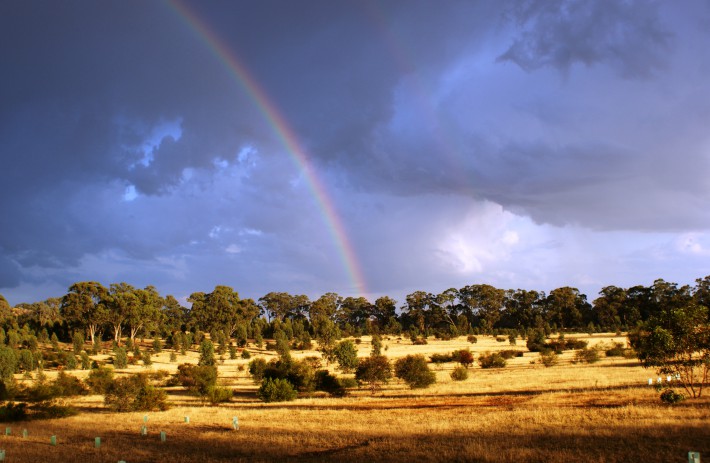We own a lovely 142 hectare (350 acre) ex-grazing property called Thorpewood . Thorpewood is located north of Violet Town, in north eastern Victoria and has a mixture of Grassy Woodland and Box-Ironbark Country. Two like-minded families joined forces and bought the property. We were attracted to its range of diverse native species- some threatened and some near threatened. We hoped to conserve and improve the property and hence, extend the range of species on the property and increase the numbers in the threatened species. At the time of purchase some very good improvement work had been started by Trust for Nature who had bought the property through their revolving fund. It was a requirement that we put a Trust for Nature covenant on the property and we were very happy to comply with this.

Birds in Harmony

As the diversity of our planting is improving the diversity of birds is increasing with it. In replicating and extending the plant diversity of our forest the Seed Production Area (SPA) is highlighting the dependent relationships between native birds and indigenous plants. It has certainly made us more aware of the affect we can have on the landscape.
Many species of birds have moved into or passed through the SPA taking advantage of seed, nectar, pollen, and insect supplies. We have noted more Red-browed Finches enjoying the native grasses. Crested Shrike-tits have been seen for the first time in late summer 2011/2012 as they joined Yellow-faced Honeyeaters and White-naped Honeyeaters in taking advantage of the copious nectar supplies of the Silver Banksias. These plants were previously visited by Yellow-tailed Black Cockatoos, feasting on the seed, earlier in summer. The Cockatoos had also enjoyed the fruit of the Hakea plants, pruning them in the process. The Hakea then flowered through winter providing nectar for Eastern Spine-bills and White-eared Honeyeaters. The Grey Shrike-thrush and Yellow-rumped Thornbills have established across the area and Silvereyes are regular visitors.
